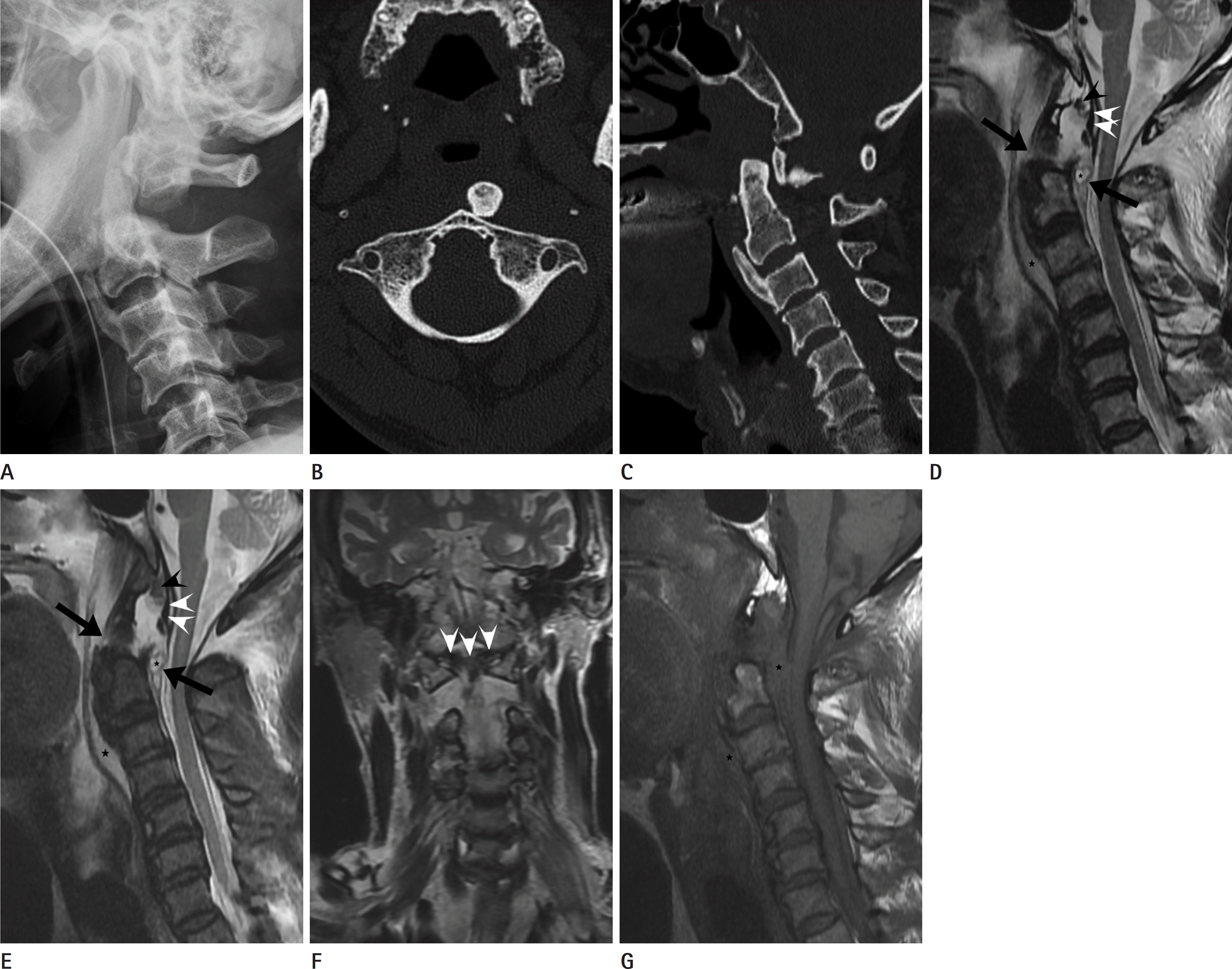Abstract
Traumatic posterior atlantoaxial dislocation without odontoid fracture is very rare. Patient prognosis depends on the neurologic symptoms or the extent of damage to the structures. In this case, a 78-year-old-male suffered a posterior atlantoaxial dislocation without odontoid fracture after a traffic accident. We report this case because an exact diagnosis and proper treatment can reduce the neurologic complica-tions in patients with posterior atlantoaxial dislocation.
Index terms
Atlantoaxial Dislocation, Posterior, Transverse Ligament, Multimodal ImagingREFERENCES
1. Garber JN. Abnormalities of the atlas and axis vertebrae–congenital and traumatic. J Bone Joint Surg Am. 1964; 46:1782–1791.

2. Alker GJ Jr, Oh YS, Leslie EV. High cervical spine and cra-niocervical junction injuries in fatal traffic accidents: a ra-diological study. Orthop Clin North Am. 1978; 9:1003–1010.

3. Xu Y, Li F, Guan H, Xiong W. Traumatic posterior atlantoaxial dislocation without associated fracture but with neu-rological deficit: a case report and literature review. Medicine (Baltimore). 2015; 94:e1768.
4. Steinmetz MP, Mroz TE, Benzel EC. Craniovertebral junction: biomechanical considerations. Neurosurgery. 2010; 66(3 Suppl):7–12.
5. Haralson RH 3rd, Boyd HB. Posterior dislocation of the atlas on the axis without fracture. Report of a case. J Bone Joint Surg Am. 1969; 51:561–566.
6. Sud S, Chaturvedi S, Buxi TB, Singh S. Posterior atlantoaxial dislocation without associated fracture. Skeletal Radiol. 2002; 31:529–531.
7. Doherty BJ, Heggeness MH. Quantitative anatomy of the second cervical vertebra. Spine (Phila Pa 1976). 1995; 20:513–517.

8. Tucker SK, Taylor BA. Spinal canal capacity in simulated displacements of the atlantoaxial segment: a skeletal study. J Bone Joint Surg Br. 1998; 80:1073–1078.
Fig. 1.
Traumatic posterior atlantoaxial dislocation without fracture of the odontoid process in a 78-year-old man. Cervical spine lateral radiography (A) shows posterior dislocation of the atlas with respect to the axis. Axial computed tomography (CT) scan (B) shows that the odontoid process is located anterior to the atlas. Sagittal CT image (C) demonstrates no evidence of odontoid fracture. T2-weighted sagittal magnetic resonance (MR) (D) and fat suppression T2-weighted sagittal MR (E) demonstrate ruptured anterior longitudinal and posterior longitudinal ligaments (arrows). Also, the apical ligament (black arrowhead) is detached from the odontoid process. T2-weighted sagit-tal (D) and coronal MR (F) images show an intact transverse ligament (white arrowheads). Fluid collection or hematoma is noted in the upper cervical prevertebral and epidural regions (asterisks on image D, E and G). There is no spinal cord signal abnormality.





 PDF
PDF ePub
ePub Citation
Citation Print
Print


 XML Download
XML Download